Introduction
“Decoding the 10 Mega Events of the Third Century: A Transformative Era in World History” delves into a pivotal period that witnessed significant changes across the globe. The Third Century, spanning from 201 AD to 300 AD, was marked by a confluence of political, social, and cultural transformations. This era, often overshadowed by the grandeur of earlier Roman history, is a complex tapestry of events that redefined empires, shifted power dynamics, and set the stage for the world’s future. From the Crisis of the Third Century in the Roman Empire to the rise of the Sassanid Empire and the emergence of new religious movements, this exploration uncovers the profound impacts of this dynamic age on the course of history.
The Crisis of the Third Century in the Roman Empire: A Precarious Period of Decline and Instability
The Crisis of the Third Century in the Roman Empire refers to a tumultuous period of profound political, economic, social, and military instability that plagued the Roman Empire from approximately 235 AD to 284 AD. This era was characterized by a series of internal and external challenges that threatened the very existence of the Roman state. Below, I will provide a detailed explanation of this crisis.
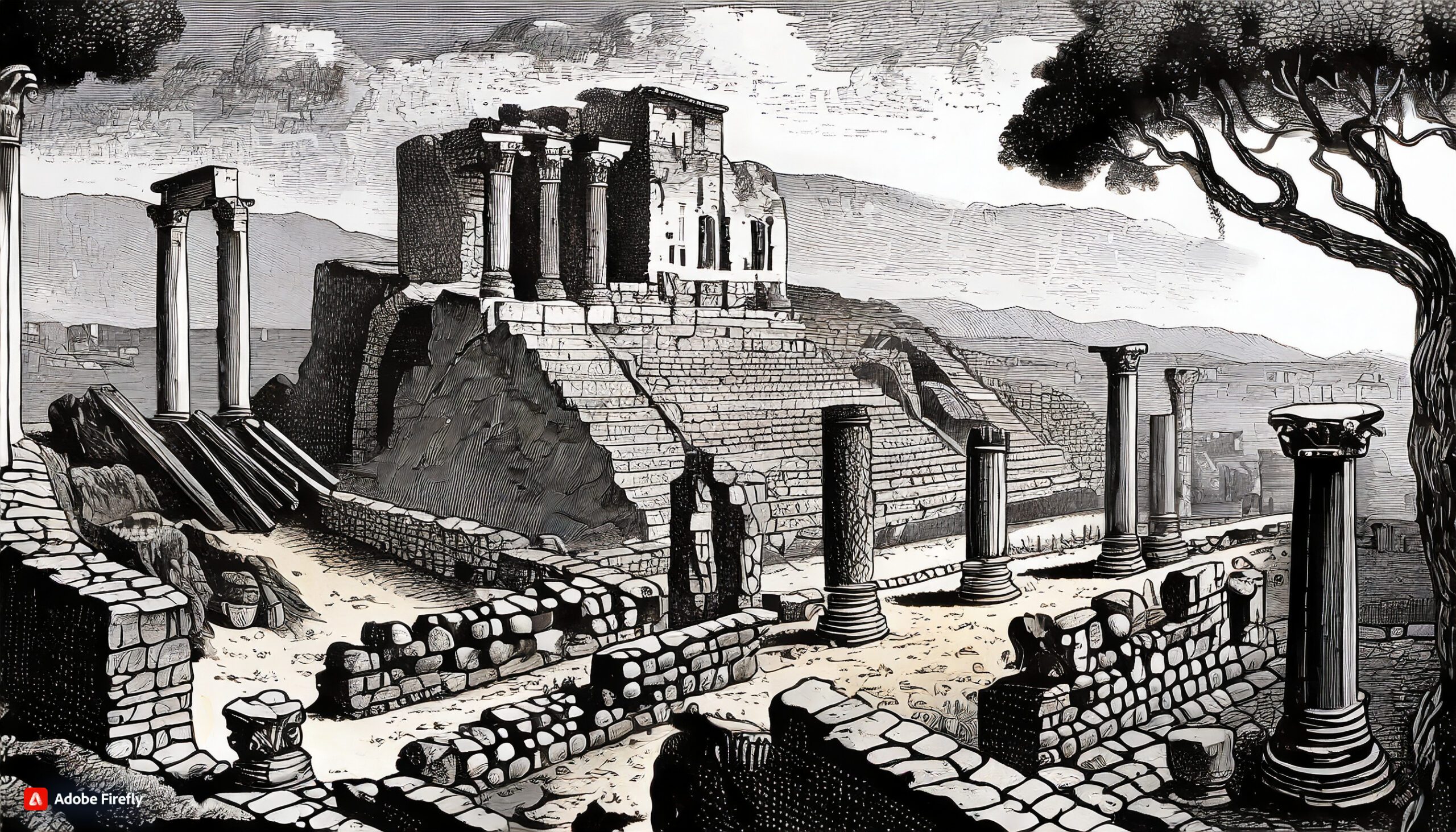
- Political Instability: The crisis was marked by a rapid turnover of emperors, with numerous short-lived reigns and frequent assassinations. The emperors who did manage to hold power often lacked the authority or resources to govern effectively. This political turmoil weakened the central authority and contributed to regional fragmentation.
- Economic Turmoil: The Roman economy faced severe difficulties during this period. Rampant inflation, debasement of currency, and excessive taxation led to a decline in the value of Roman coinage. Trade and production were disrupted, and the Roman state faced severe financial difficulties.
- Military Challenges: The empire was under constant threat from external forces. Germanic tribes, Goths, Sassanid Persians, and other non-Roman groups invaded and raided Roman territory. The Roman military, plagued by corruption and insufficient resources, struggled to defend the vast frontiers.
- Regional Autonomy: In response to the weakening central authority, several provinces and regions began to assert their autonomy. Local leaders and generals often acted independently, further fragmenting the empire and making it challenging for the central government to exert control.
- Social Discontent: Widespread economic hardship and insecurity led to social unrest. Banditry, revolts, and general dissatisfaction among the populace added to the instability of the period.
- Diocletian’s Reforms: The Crisis of the Third Century eventually led to the ascension of Emperor Diocletian, who implemented significant reforms to stabilize the empire. He divided the empire into eastern and western halves and established a system of co-emperors (the Tetrarchy). These reforms helped restore some order and stability, but they did not entirely resolve the underlying issues.
The Crisis of the Third Century was a pivotal moment in Roman history. Although the Roman Empire did not collapse entirely during this period, it emerged profoundly changed. The crisis highlighted the need for a more structured and less centralized governance system, which eventually paved the way for the establishment of the Byzantine Empire in the East and the evolving Roman Empire in the West. This turbulent era serves as a fascinating case study in the challenges and complexities of governing a vast and diverse empire during times of profound crisis.
Reign of the Philosopher-King: Marcus Aurelius (161-180 AD)
The reign of Marcus Aurelius, from 161 to 180 AD, is often celebrated as one of the most remarkable periods in Roman history due to his unique role as a philosopher-king. This period is notable for its blend of philosophy and governance, as Marcus Aurelius was not only an emperor but also a prominent Stoic philosopher. Here’s a detailed explanation of this fascinating era:
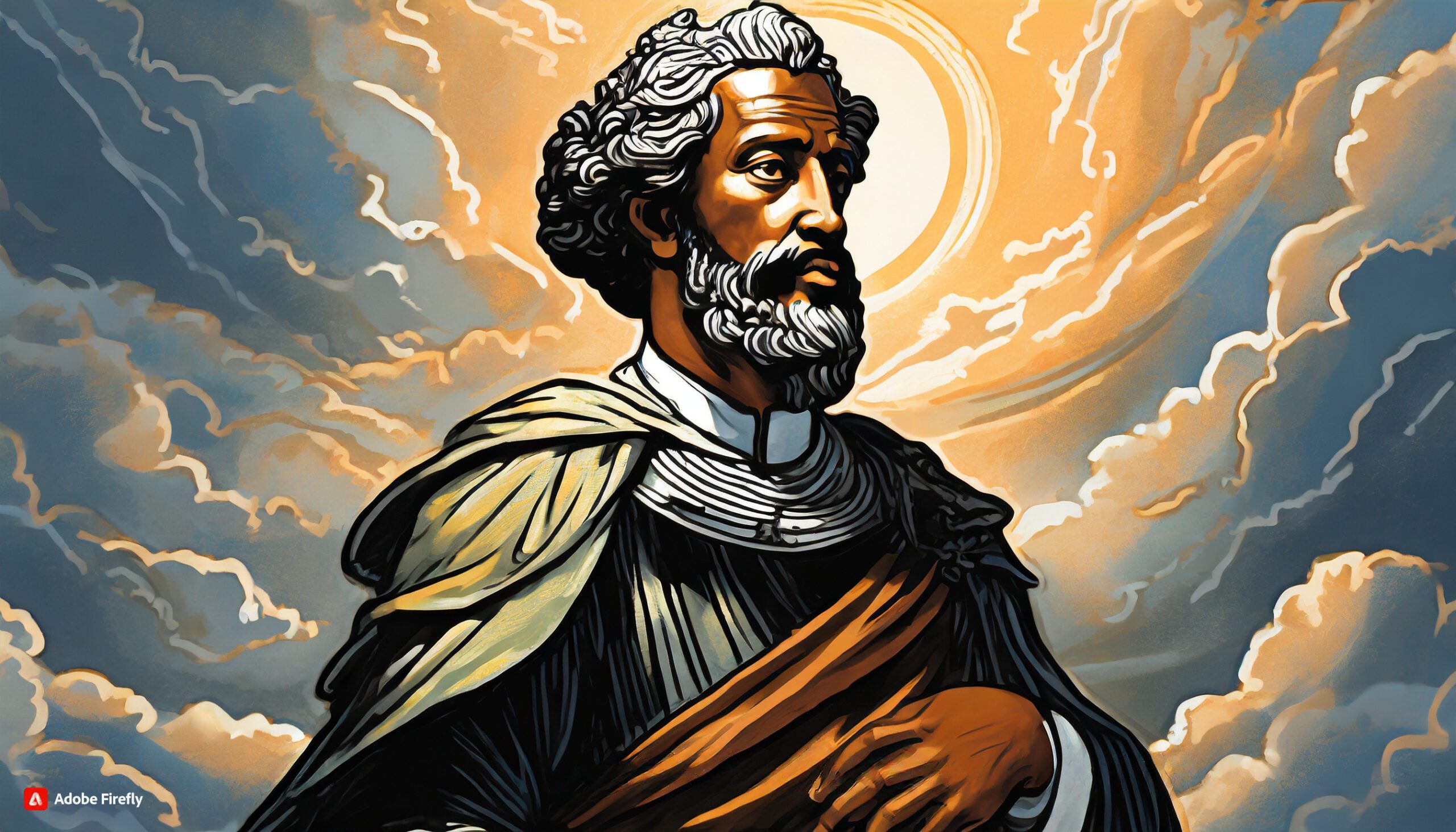
- Philosopher-Emperor: Marcus Aurelius was the last of the “Five Good Emperors” and the only one known for his deep philosophical contemplation. He was a devoted Stoic philosopher and wrote extensively, leaving behind a collection of personal reflections known as “Meditations.” In these writings, he explored themes of ethics, duty, and the nature of the self, reflecting on his role as an emperor and his responsibilities to the Roman people.
- Stoic Influence: Under Marcus Aurelius, Stoicism became closely intertwined with the governance of the Roman Empire. Stoicism emphasizes self-control, rationality, and virtuous living. The emperor’s Stoic beliefs influenced his policies, decisions, and interactions with his subjects. He strove to be just, temperate, and compassionate in his rule.
- Challenges and Conflicts: Marcus Aurelius faced several challenges during his reign, including wars on multiple fronts. The Roman Empire was engaged in conflicts with various tribes and the powerful Parthian Empire. Despite these pressures, he maintained a strong commitment to Stoic principles, promoting diplomacy and trying to avoid unnecessary bloodshed.
- Plague and Natural Disasters: The reign of Marcus Aurelius was also marred by the Antonine Plague, which took a heavy toll on the Roman population. Additionally, the empire faced natural disasters, making this period a test of the emperor’s leadership and ability to comfort and guide his people through adversity.
- Legacy: Marcus Aurelius’s philosophical writings, particularly the “Meditations,” have endured as a source of wisdom and guidance for centuries. His reign is remembered as a time of intellectual and ethical leadership in the midst of political and external challenges.
- Succession and End of an Era: Marcus Aurelius was succeeded by his son Commodus, whose rule marked a stark departure from the philosopher-king’s principles. Commodus’s reign is often seen as the beginning of the decline of the Roman Empire.
The reign of Marcus Aurelius is celebrated for its unique fusion of philosophy and governance. His commitment to Stoic principles, ethical leadership, and his writings in “Meditations” make him an enduring figure in both Roman history and the history of philosophy. Despite the challenges of his time, Marcus Aurelius’s legacy as a philosopher-king continues to inspire leaders and thinkers to this day.
Cao Cao’s Domination of Northern China During the Three Kingdoms Period:
Cao Cao, a formidable warlord and politician, played a pivotal role in the power struggles of the Three Kingdoms period (c. 220-280 AD) in ancient China. His mastery of strategy and statecraft allowed him to consolidate and maintain control over northern China, making him a central figure during this turbulent era. Here is an overview of Cao Cao’s domination of northern China during the Three Kingdoms period:

- Early Life and Rise to Power: Cao Cao hailed from a noble family in the late Eastern Han Dynasty. He began his career as a local official and military officer, steadily building his influence and power base. His strategic prowess became evident as he navigated the intricate politics of the declining Han Dynasty.
- The Yellow Turban Rebellion: Cao Cao’s ascent to prominence was catalyzed by his involvement in suppressing the Yellow Turban Rebellion, a widespread peasant uprising. He effectively quelled the rebellion, earning recognition and respect for his military acumen.
- Battle of Guandu (200 AD): One of Cao Cao’s most critical achievements was his victory over the warlord Yuan Shao at the Battle of Guandu. This triumph solidified his control over northern China and established him as a dominant force in the region.
- Political and Administrative Skill: Cao Cao was not just a military genius but also a capable administrator. He implemented policies that improved governance and benefited the people, which helped to stabilize the territories under his control.
- Alliance with Yuan Shao’s Defectors: After defeating Yuan Shao, Cao Cao cleverly integrated many of Yuan Shao’s former subordinates into his own administration, further strengthening his hold on northern China.
- Control Over the Han Emperor: Cao Cao maintained a semblance of loyalty to the Eastern Han Dynasty, keeping the emperor under his control. This allowed him to legitimize his rule and influence within the region.
- Relations with Rival Warlords: While Cao Cao dominated northern China, he faced formidable rivals in the south, primarily Sun Quan and Liu Bei. These rivalries would eventually lead to the tripartite division of China into the Three Kingdoms.
- Cultural and Literary Contributions: Cao Cao was not solely a military and political figure. He was also known for his patronage of scholars and literary talents, contributing to Chinese literature and culture.
- End of the Era: Cao Cao’s life and career played a pivotal role in shaping the Three Kingdoms period, but he did not live to see its conclusion. His legacy was carried on by his son, Cao Pi, who eventually declared the Wei Dynasty, marking the formal division of China into the Three Kingdoms.
Cao Cao’s domination of northern China during the Three Kingdoms period was marked by his astute leadership, military successes, and administrative competence. His ability to maintain control and influence in the face of various challenges is a testament to his historical significance during this tumultuous period in ancient Chinese history.
Invention of the stirrup in China
The invention of the stirrup is a crucial development in the history of warfare and horsemanship, and it is believed to have originated in China during ancient times. The stirrup revolutionized cavalry tactics and had a profound impact on the effectiveness of mounted soldiers. Here’s an overview of the invention of the stirrup in China:
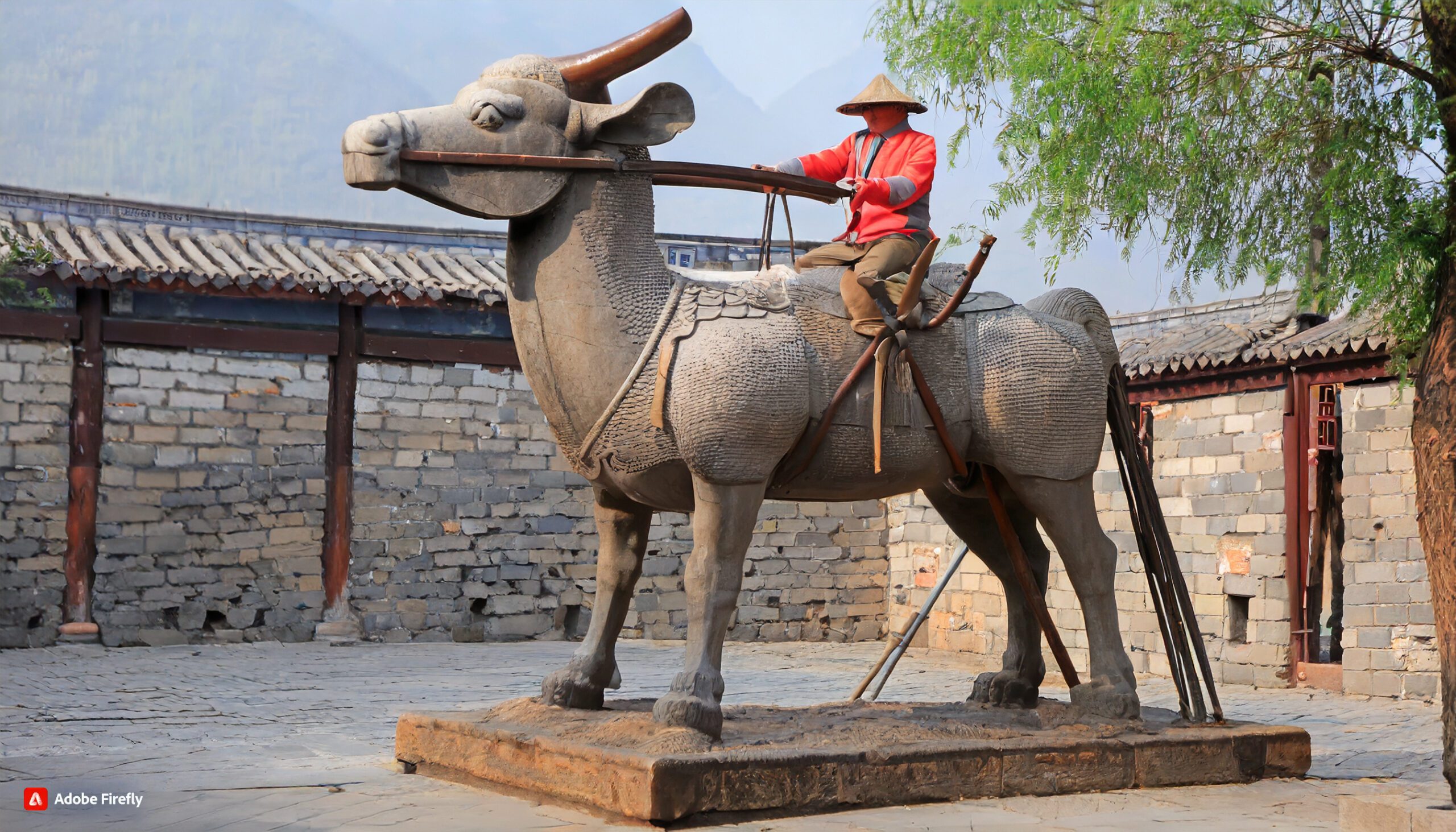
Invention and Early Use: The stirrup’s invention in China is thought to have occurred around the 4th to 1st centuries BC, during the Warring States period or possibly even earlier. Initially, these early stirrups were simple devices made of loops of rope or leather that hung from a saddle, allowing riders to stabilize themselves while mounted. They were primarily used for equestrian sports and were not immediately employed for military purposes.
Martial Significance: The significance of the stirrup in warfare became evident over time. By the Northern Wei Dynasty (386-534 AD), stirrups evolved into more sophisticated, solid structures made of metal, which firmly secured a rider’s foot. This development had several key effects on military tactics and combat:
- Improved Stability: The stirrup provided riders with enhanced stability, allowing them to stand in the saddle, absorb shock from impacts, and maintain balance during combat. This was particularly valuable for archers and lancers.
- Enhanced Mobility: With the ability to maintain a secure seat while riding, mounted soldiers could execute more complex maneuvers and maintain control of their horses, making them more agile and effective in battle.
- Increased Power and Precision: The stirrup allowed for greater control and precision when wielding weapons such as spears and lances. Soldiers could generate more force behind their attacks, making cavalry more formidable on the battlefield.
Spread to Other Regions: The stirrup’s introduction in China marked a significant military advantage, and its use eventually spread to other parts of Asia, the Middle East, and Europe. Its influence was especially notable in the steppe regions where mounted warfare was central to the way of life.
Impact on Global History: The widespread adoption of the stirrup significantly influenced the development of cavalry-based armies, which played a pivotal role in shaping the course of history. It was a critical factor in the success of empires like the Mongol Empire, which relied heavily on cavalry tactics, and it contributed to the success of knights in medieval Europe.
The invention of the stirrup in China, while initially designed for equestrian sports, evolved into a military innovation that revolutionized cavalry warfare. Its impact on the art of war and the development of powerful empires cannot be overstated, making it one of the most influential inventions in the history of military technology.
“The Remarkable Expansion of the Gupta Empire in India: A Golden Age of Prosperity and Culture”
The expansion of the Gupta Empire in India represents a significant and transformative period in the subcontinent’s history. This empire, which existed from around 320 to 550 CE, witnessed remarkable territorial growth, cultural flourishing, and economic prosperity. Here, we delve into the details of the expansion of the Gupta Empire in India:

- Foundation and Early Years: The Gupta Empire was founded by Chandragupta I, who ruled over a small kingdom in the Magadha region in the early 4th century CE. He established the Gupta Dynasty and laid the foundation for the empire’s expansion.
- Chandragupta II’s Rule: The Gupta Empire’s zenith came during the reign of Chandragupta II, also known as Chandragupta Vikramaditya. His rule (c. 375-415 CE) marked a period of territorial expansion, stability, and cultural renaissance.
- Territorial Expansion: Under Chandragupta II and his successors, the Gupta Empire expanded its influence, primarily through diplomacy and military campaigns. The Guptas successfully absorbed several neighboring regions, including parts of northern and central India. Their territory extended from the Ganges River in the north to the Narmada River in the south.
- Religious and Cultural Accomplishments: The Gupta period is often referred to as a “Golden Age” due to its cultural and intellectual achievements. This era saw the flourishing of literature, art, science, and mathematics. Scholars like Aryabhata, Kalidasa, and Vatsyayana made significant contributions during this time.
- Economic Prosperity: The Gupta Empire experienced economic prosperity through agriculture, trade, and a well-structured taxation system. Their coinage was renowned for its quality and standardization, contributing to trade and commerce.
- Buddhism and Hinduism: The Gupta rulers were generally tolerant of different religious traditions, and their patronage extended to both Buddhism and Hinduism. The famous Nalanda University, a center of Buddhist learning, was established during this period.
- Influence of Silk Road: The Gupta Empire played a significant role in trade along the Silk Road, facilitating the exchange of goods and ideas between India, China, Central Asia, and the Middle East.
- End of the Gupta Empire: The Gupta Empire began to decline in the late 5th century and eventually fragmented into smaller states. It faced external pressures from the Huna (Hun) invasions and internal challenges.

The expansion of the Gupta Empire in India not only created a vast and prosperous domain but also fostered an environment where art, science, and culture thrived. The period is celebrated for its enduring contributions to Indian civilization, and it remains a symbol of the great heights that Indian society achieved in ancient times. The Gupta Empire’s legacy is a testament to the transformative power of good governance and the patronage of intellectual and artistic endeavors in shaping the course of history.
“The Resplendent Ascent: The Sassanian Empire’s Rise in Persia”
The rise of the Sassanian Empire in Persia, also known as the Sassanid Empire or the Neo-Persian Empire, marked a remarkable and transformative era in the history of the region. The Sassanians, a Persian dynasty that emerged in the 3rd century CE, established a powerful and enduring empire that shaped the course of Middle Eastern history. Here, we explore in detail the ascent of the Sassanian Empire in Persia:
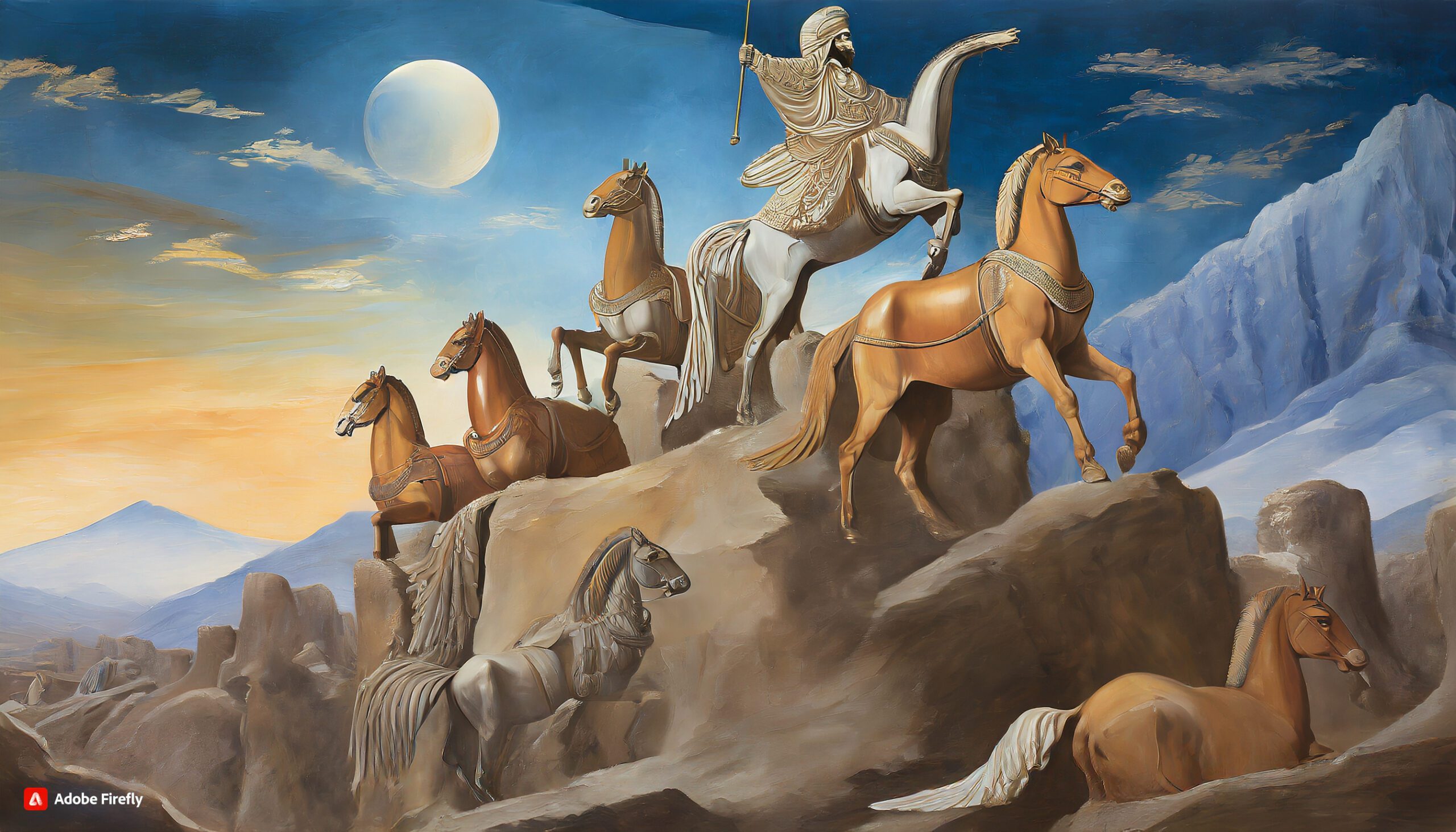
- The Collapse of the Parthian Empire: The Sassanian Empire’s rise can be understood in the context of the decline of the Parthian Empire, which had ruled over Persia for centuries. The Parthians faced internal strife and external threats, which provided an opportunity for the Sassanians to assert their authority.
- The Rise of Ardashir I: The Sassanian Empire was founded by Ardashir I, a Persian noble who successfully rebelled against the Parthians. In 224 CE, he defeated the Parthian king Artabanus V and established the Sassanian Dynasty.
- Revival of Zoroastrianism: A significant aspect of the Sassanian rise was the revival of Zoroastrianism as the state religion. The Sassanian rulers were staunch Zoroastrians, and they promoted the faith as a unifying force in the empire.
- Military Successes: The Sassanians were formidable militarily. Their forces were well-organized and equipped, and they achieved significant victories against their neighbors, including the Roman Empire. The capture of the Roman emperor Valerian in 260 CE was a high point in their military conquests.
- Shapur I and the Sassanian High Point: Under the reign of Shapur I (241-272 CE), the Sassanian Empire reached its zenith. Shapur’s military campaigns led to the expansion of the empire, which included parts of modern-day Iraq, Armenia, and even some regions in the eastern Roman Empire.
- Cultural and Architectural Achievements: The Sassanian period is celebrated for its cultural and architectural achievements. The Sassanians built grand palaces, cities, and structures, including the impressive city of Ctesiphon. Their art and architecture displayed intricate designs and elaborate motifs.
- Administrative and Legal Reforms: The Sassanians implemented administrative and legal reforms that contributed to the empire’s stability. They established a complex bureaucracy and a tax system. Their legal code, the “Pahlavi” legal system, had a lasting impact on Iranian law.
- Religious Diversity: While Zoroastrianism was the official religion, the Sassanian Empire was religiously diverse, with Zoroastrians, Christians, Jews, Buddhists, and others coexisting within its borders.
- Decline and Conquests: The Sassanian Empire faced challenges in the later years, including conflicts with the Byzantine Empire and internal strife. The Arab Muslim conquests in the mid-7th century CE ultimately led to the empire’s downfall in 651 CE.
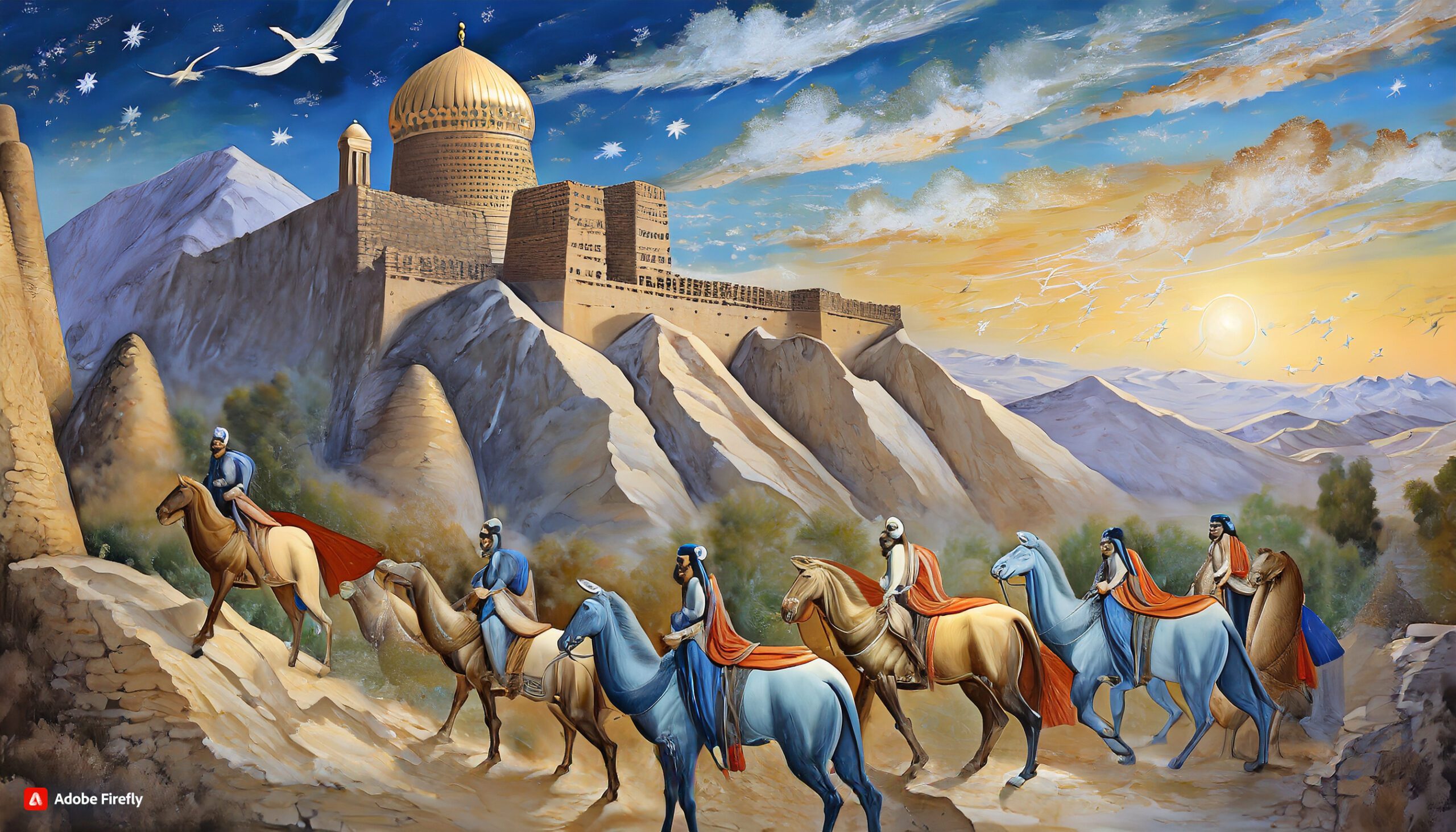
The Sassanian Empire’s rise in Persia was a significant and enduring chapter in the history of the Middle East. Its legacy lives on in the cultural, religious, and architectural contributions it made, and its influence on the development of Persian identity and statecraft remains a topic of historical fascination.
“Zero to Hero: The Pioneering Spread of the Concept of Zero in Mathematics in India”
The concept of zero, a foundational numeral in mathematics, is a remarkable contribution that originated and spread from ancient India. This mathematical innovation was not just a symbol but a transformative idea that revolutionized mathematical thinking. Here, we delve into the spread of the concept of zero in mathematics in India:
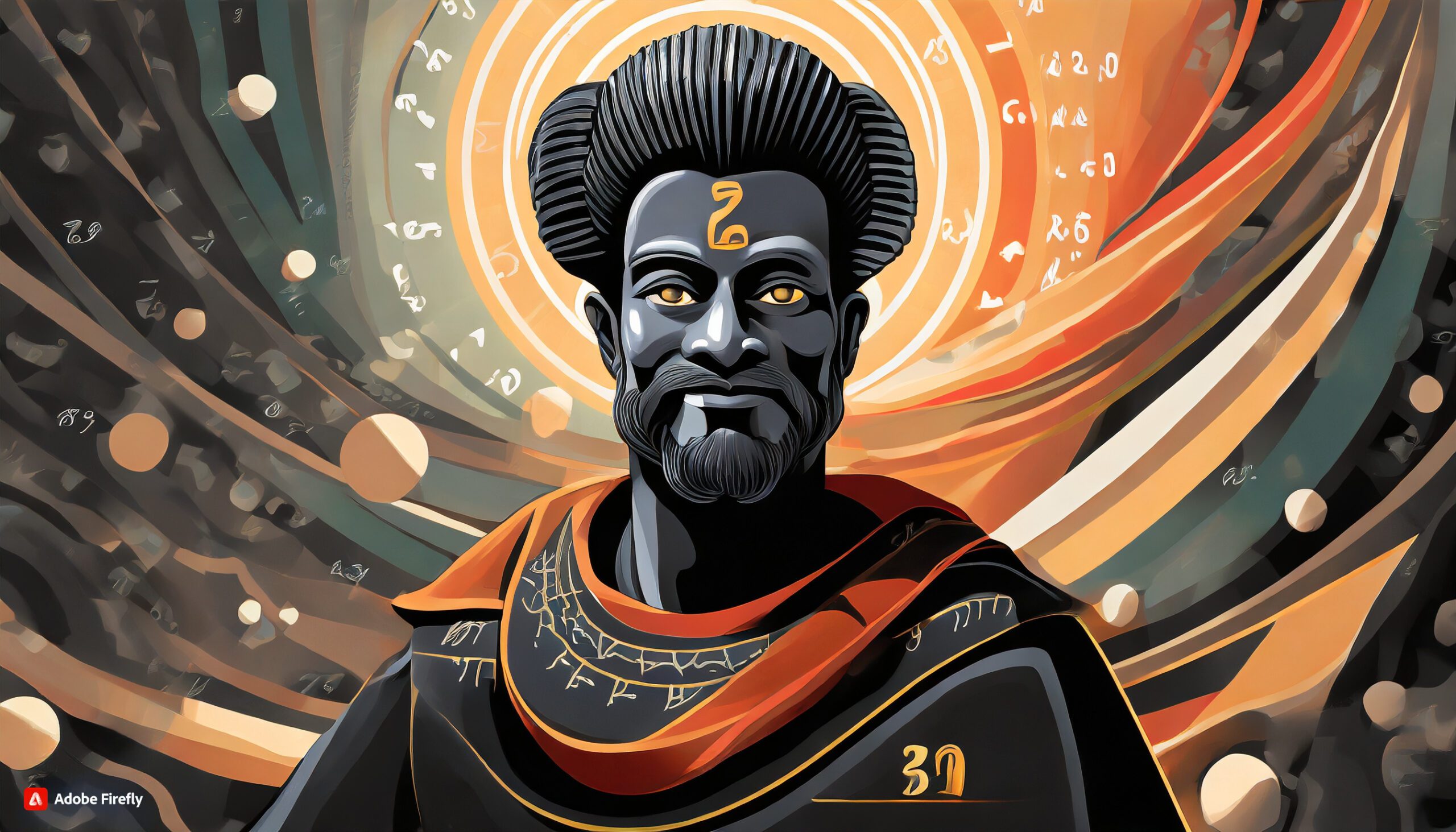
- Origins of Zero in India: The concept of zero, often represented as “0,” has its origins in ancient Indian mathematics, particularly in the works of scholars and mathematicians dating back to around the 5th century CE.
- Early Development: Early Indian mathematicians, including Aryabhata (c. 499 CE) and Brahmagupta (c. 628 CE), made significant contributions to the understanding and usage of zero in mathematical calculations. Aryabhata introduced the symbol “shunya,” which was used to denote the concept of zero.
- Symbolic Representation: The concept of zero was not merely the absence of quantity; it became a numeral in its own right. The symbol for zero evolved over time and was employed in various forms before the familiar “0” emerged.
- Practical Application: Zero was a pivotal development in practical mathematics, allowing for more efficient arithmetic, algebra, and the formulation of decimal systems. It was fundamental in counting, measurement, and commerce.
- Spreading to Other Cultures: The concept of zero gradually spread to other cultures through trade and cultural exchange, including Persia, the Arab world, and eventually Europe. Arabic scholars played a crucial role in transmitting Indian mathematical knowledge to the West.
- Role in Scientific Advancement: The concept of zero was pivotal in the advancement of various scientific disciplines, including astronomy, where it simplified calculations related to celestial movements and timekeeping.
- The Zero in Modern Mathematics: Zero is now a fundamental numeral in modern mathematics, serving as a placeholder in the decimal system and playing a key role in algebra, calculus, and other mathematical branches.
- Philosophical and Cultural Significance: The concept of zero also had philosophical and cultural significance in India, representing the idea of the void, emptiness, or the infinite, which is reflected in Indian philosophies like Buddhism and Jainism.
- Zero in Computer Science: In the digital age, the concept of zero plays a critical role in computer science and programming, where it serves as a foundation for binary code, data storage, and numerical calculations.
The spread of the concept of zero in mathematics from India to the wider world was a transformative development that profoundly influenced the way we understand and use numbers. It is a testament to the ingenuity and mathematical acumen of ancient Indian scholars and continues to be a cornerstone of modern mathematics and technology.
“The Formation of the Tetrarchy in the Roman Empire (293 AD): A Pivotal Reorganization of Imperial Power”
The formation of the Tetrarchy in the Roman Empire in 293 AD represents a significant reorganization of the imperial power structure, which sought to address the challenges of governing a vast and troubled empire. Here is a detailed explanation of this pivotal historical event:
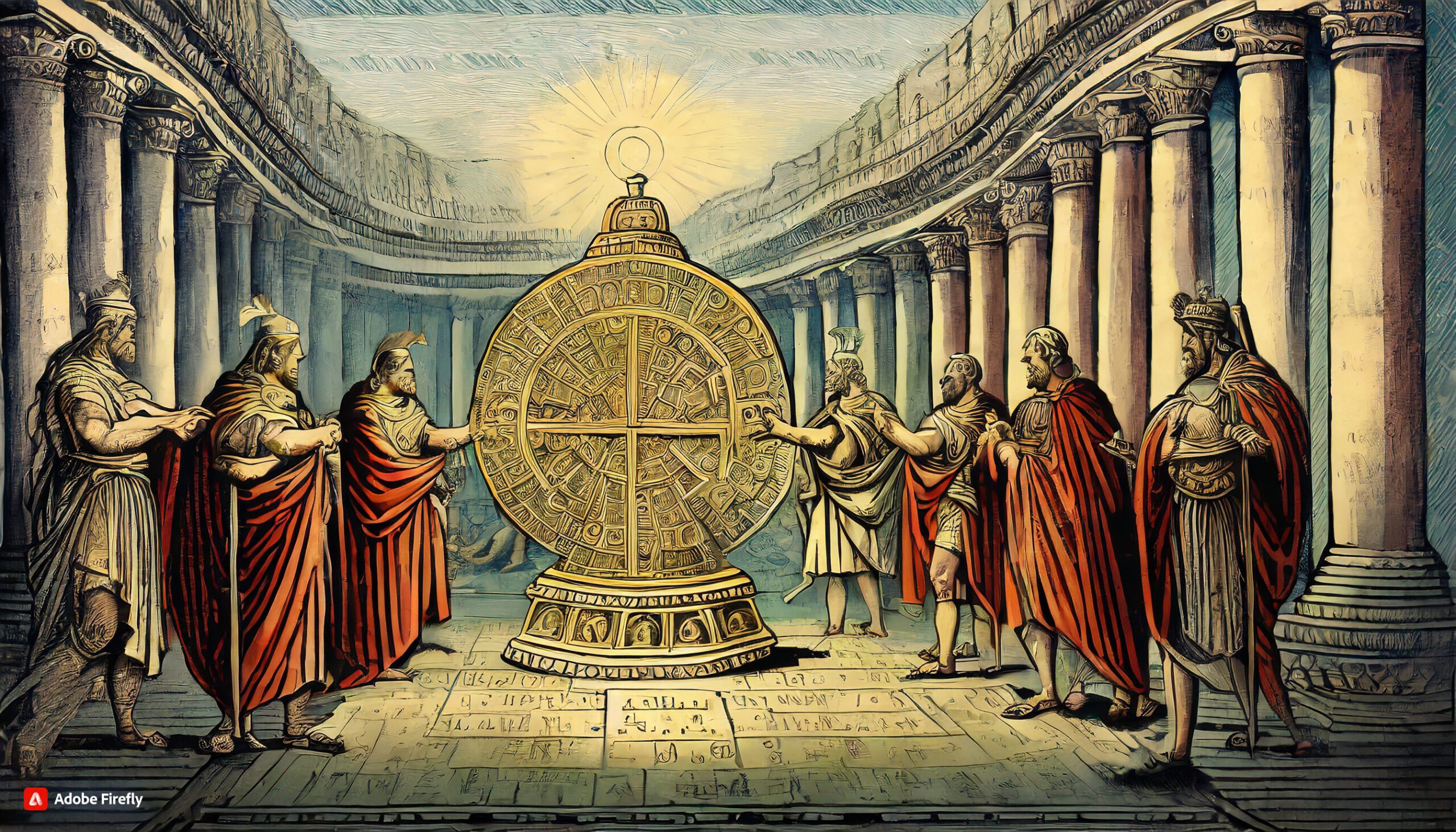
- Context of Crisis: In the late 3rd century, the Roman Empire faced a multitude of crises, including external invasions, internal revolts, economic challenges, and a series of short-lived and often ineffective emperors. The existing system of imperial rule was struggling to maintain control and stability.
- Diocletian’s Rise to Power: Diocletian, a capable general, ascended to the throne in 284 AD through a coup. Recognizing the need for a new system of governance, he set about creating a more effective administrative structure.
- The Tetrarchy Concept: In 293 AD, Diocletian introduced the Tetrarchy, which means “rule of four.” He appointed three colleagues, Maximian, Galerius, and Constantius, to serve as co-emperors alongside himself. Each emperor held the title of “Augustus” and was also responsible for naming a junior emperor, or “Caesar,” who would serve as an understudy.
- Division of the Empire: The Roman Empire was divided into eastern and western halves, with two Augusti and two Caesars. Diocletian and Maximian governed the West, while Galerius and Constantius ruled the East. This division aimed to make the empire more manageable and responsive to regional challenges.
- Rotating Leadership: One innovative aspect of the Tetrarchy was the notion of shared power and the expectation that emperors would abdicate after a set period. This principle aimed to prevent long and potentially disastrous reigns.
- Administrative Efficiency: The Tetrarchy also introduced a more efficient administrative structure, with each emperor responsible for a specific region. This improved governance, logistics, and communication throughout the empire.
- Succession and Legacy: The Tetrarchy system succeeded in providing a level of stability to the Roman Empire. Diocletian and Maximian both abdicated in 305 AD, with their chosen Caesars, Galerius and Constantius, ascending to the rank of Augustus. This peaceful transition of power marked the success of the Tetrarchy concept.
- Impact on Imperial Rule: While the Tetrarchy brought a period of stability, it also created a more complex system of imperial rule. Eventually, this complexity led to challenges, as the division of power sometimes resulted in conflicts and civil wars.
- Later Reforms and Shifts: The Tetrarchy did not last indefinitely. It underwent further reforms and changes in the following decades, and the division of the empire eventually evolved into the Eastern Roman Empire (Byzantine Empire) and the Western Roman Empire.

The formation of the Tetrarchy was a bold attempt to address the Roman Empire’s issues by reorganizing and dividing power. While it succeeded in bringing stability for a time, it also demonstrated the inherent challenges of maintaining such a complex system of governance. This period marked a critical juncture in the evolution of the Roman Empire and its eventual division into eastern and western halves.
“Unveiling the Byzantine Identity: The First Recorded Use of the Term ‘Byzantine Empire'”
The term “Byzantine Empire” is commonly used to refer to the eastern part of the Roman Empire that continued to exist long after the fall of the western portion. Its first recorded use sheds light on the historical evolution of this distinct identity and its significance:
- Origin of the Term: The term “Byzantine Empire” was not used by the Byzantines themselves. Instead, they referred to their empire as the “Roman Empire.” The term “Byzantine” came into use during the Renaissance and was further popularized in the 18th and 19th centuries to differentiate the Eastern Roman Empire from its Western counterpart.
- First Recorded Usage: The first recorded use of the term “Byzantine Empire” is attributed to a German historian named Hieronymus Wolf. In his work “Corpus Historiæ Byzantinæ” (1557), Wolf used the term “Byzantinus” to describe the empire’s history and distinct culture.
- Rationale for the Term: The use of the term “Byzantine Empire” was partly due to the desire to distinguish the eastern Roman Empire from the western Roman Empire, which had fallen in 476 AD. It also reflected the different character of the eastern empire, including its Greek language and the evolution of its administrative and cultural identity.
- The Eastern Roman Empire’s Legacy: The Eastern Roman Empire, or Byzantine Empire as it is commonly known today, played a significant role in preserving and transmitting aspects of classical antiquity, especially Greek and Roman knowledge, during the early medieval period. Byzantium was the bridge between the ancient and medieval worlds.
- Flourishing Culture: During the Byzantine period, significant contributions were made in various fields, including art, architecture, literature, and religious thought. Icons, mosaics, the Hagia Sophia, and the works of scholars like Procopius and John of Damascus are examples of Byzantine cultural achievements.
- Political and Religious Influence: The Byzantine Empire had a profound influence on the development of Christianity, particularly in shaping the Eastern Orthodox Church. The empire’s capital, Constantinople (modern-day Istanbul), was a center of Christian scholarship and theological debate.
- Survival and Legacy: The Byzantine Empire endured for nearly a millennium after the fall of the Western Roman Empire, surviving various challenges, including wars with Islamic and European powers. It was ultimately conquered by the Ottoman Turks in 1453, leading to the end of the Byzantine era.
The first recorded use of the term “Byzantine Empire” by Hieronymus Wolf was a pivotal moment in the historical interpretation of the eastern Roman state. It helped distinguish the Byzantine identity from the western Roman tradition and contributed to the preservation of Byzantine history and culture. Today, the term “Byzantine Empire” continues to serve as a valuable framework for understanding the unique legacy of the eastern Roman civilization.
Persecution of Christians under the Roman Emperor Decius (250 AD)
The persecution of Christians under the Roman Emperor Decius in 250 AD was a significant episode in the history of early Christianity and the Roman Empire. Decius, who reigned from 249 to 251 AD, initiated a widespread and organized campaign against Christians during his rule. Here is an explanation of the persecution of Christians under Decius:
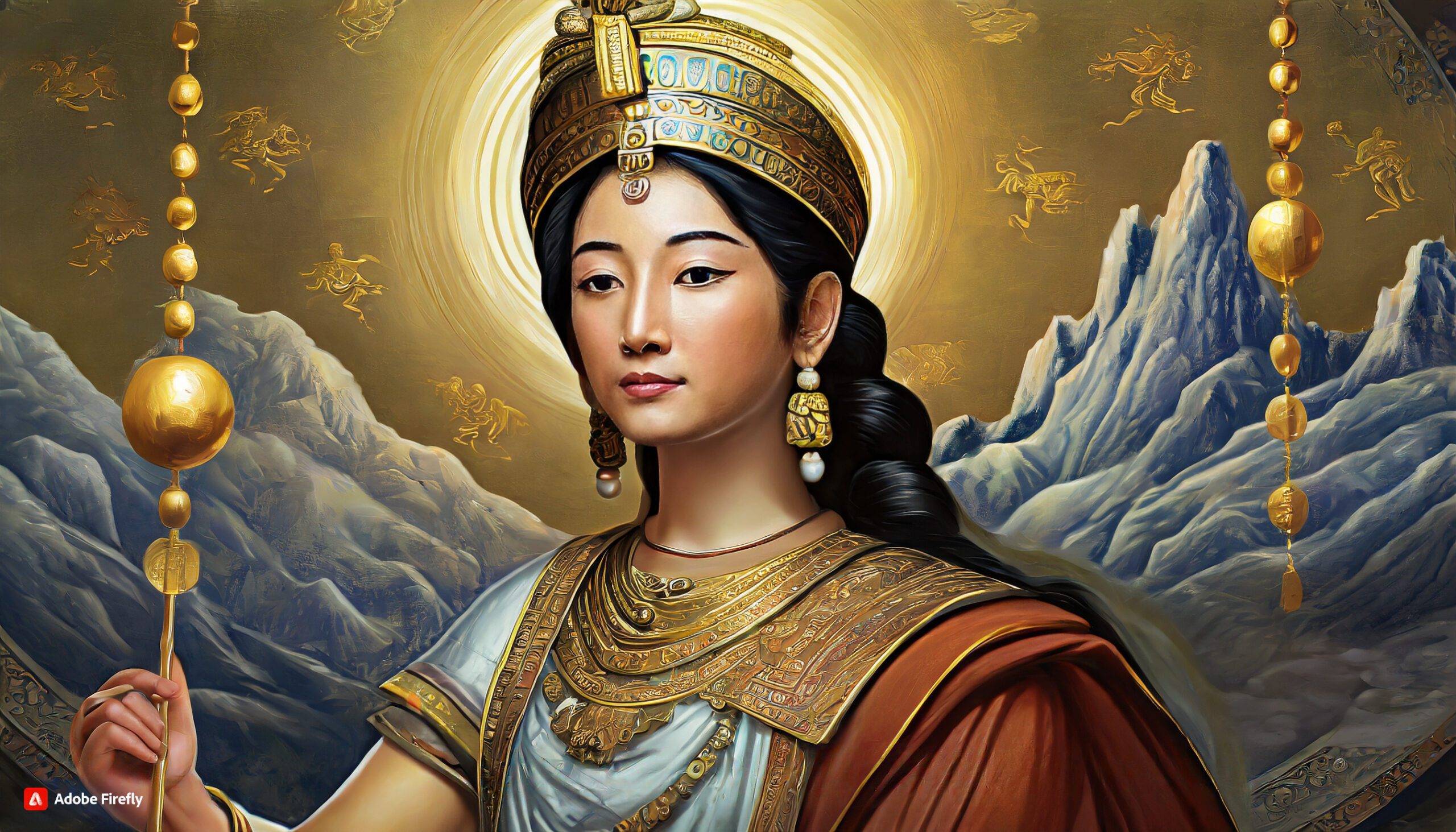
- Background: Decius’s reign marked a time of internal and external turmoil for the Roman Empire. The empire was grappling with political instability, economic challenges, and external threats from various fronts.
- Decius’s Motivation: Decius was motivated by a desire to restore the traditional Roman religious practices and secure the favor of the gods for the empire. He believed that the unity of the Roman state depended on a return to traditional Roman religion.
- Edict of Decius (250 AD): In 250 AD, Decius issued an edict that required all Roman citizens to perform a religious sacrifice to the Roman gods and obtain a certificate, known as a “libellus,” attesting to their compliance. This edict was specifically directed at Christians, as their refusal to participate in pagan rituals was seen as a form of disloyalty to the state.
- Persecution of Christians: The edict led to a widespread persecution of Christians throughout the Roman Empire. Christian clergy and laypeople faced the choice of complying with the edict by participating in pagan rituals or facing various forms of punishment, including imprisonment, torture, and execution.
- Martyrdom and Apostasy: Many Christians chose to remain steadfast in their faith, even in the face of persecution, and refused to make sacrifices to the Roman gods. This led to a significant number of martyrs, individuals who willingly suffered and died for their religious beliefs. Others, however, succumbed to the pressure and renounced their faith, a practice known as apostasy.
- Impact on the Christian Community: The Decian persecution was a challenging period for the early Christian community. It raised theological questions about how to deal with those who had apostatized under duress and how to reintegrate them into the Church.
- Short-Lived Persecution: The Decian persecution was intense but relatively short-lived. It ended with the death of Decius in 251 AD and the accession of Emperor Gallus, who adopted a more lenient policy toward Christians.
- Ongoing Influence: The Decian persecution left a lasting impact on the early Christian Church. It prompted theological discussions about the nature of martyrdom, apostasy, and reconciliation. The Church also established protocols for handling those who had renounced their faith during times of persecution.
The persecution of Christians under the Roman Emperor Decius in 250 AD was a significant episode in the history of Christianity. It demonstrated the challenges faced by early Christians as they navigated their religious convictions in the context of a Roman state that viewed their beliefs as a threat to its stability and traditional religious practices. The Decian persecution contributed to the development of Christian theology and the Church’s approach to issues of apostasy and martyrdom.
